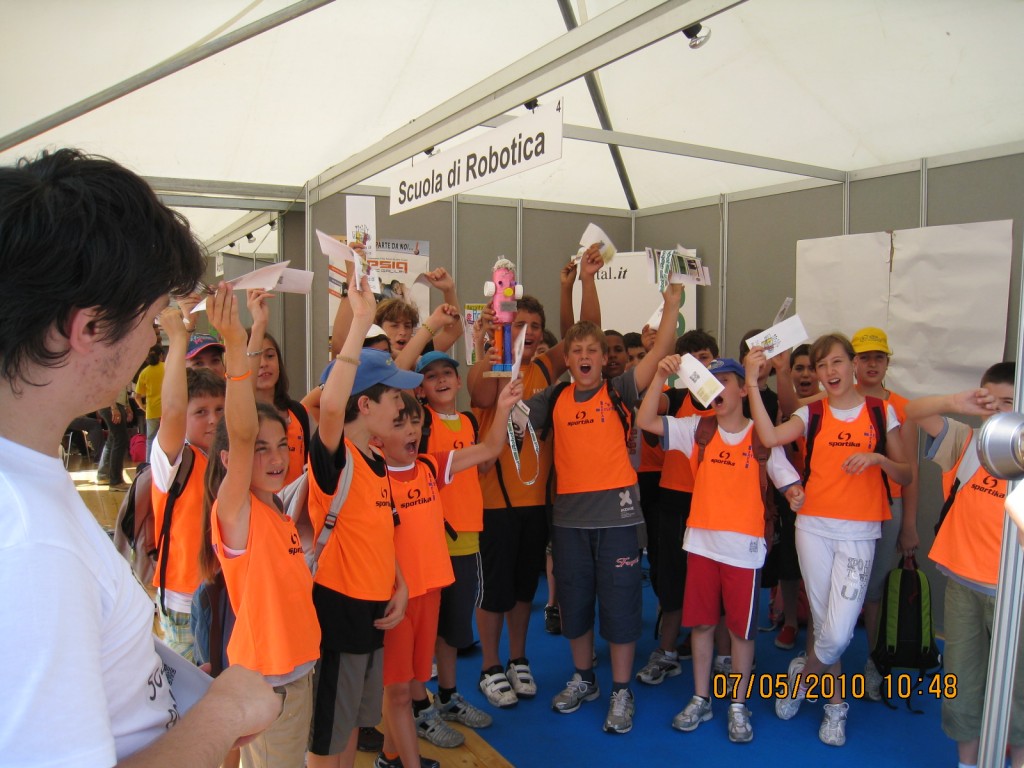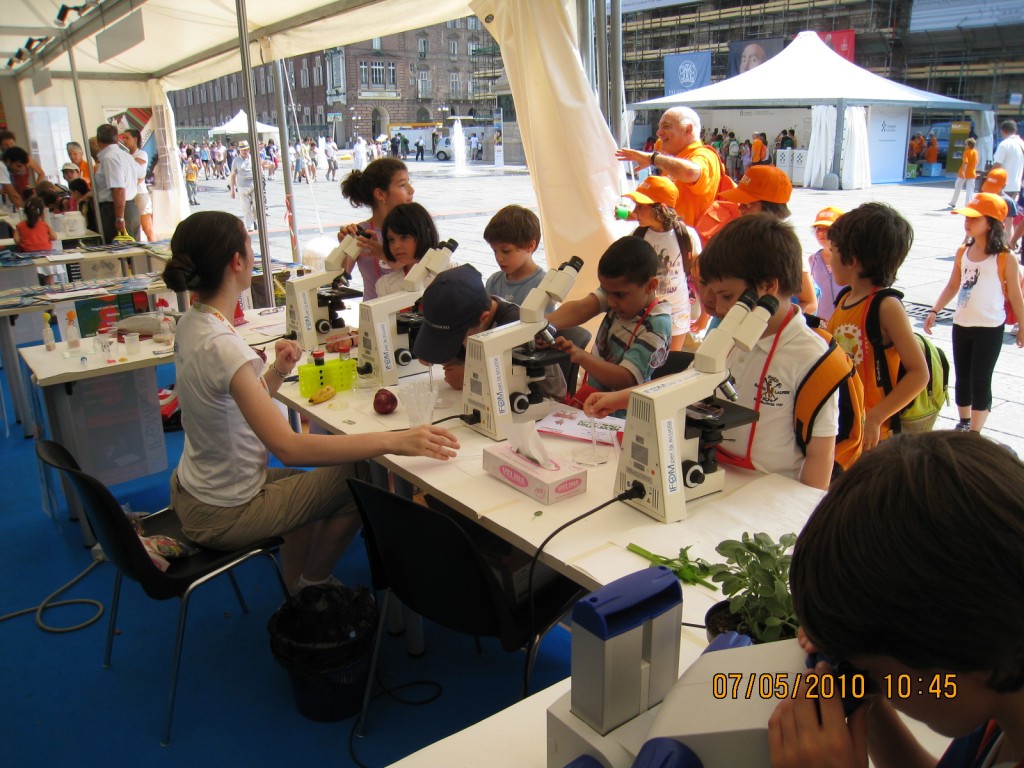“Science in the City” is always an integral part of the Euroscience experience. Simply put, the organization’s dictum is to put science where the people are.
And there is no greater pedestrian crossroads in Turin than the Piazza Castello, home to a turreted palace where the Via Roma and Via Po meet. One baking hot afternoon, I ventured from the air-conditioned comforts of the Lingotto Congressi to visit the two dozen white tents where children largely ruled. Oblivious to the heat, scores of children took turns learning about and “building” robots with special kits, looking through microscopes, building 3D structures, or playing a card game called Discardcoal. In the piazza itself, the most heat-resistant played Green Goose, moving as human pawns on a life-sized board as they picked up cues about recycling or renewable energy.

Italian children having fun with science as part of Euroscience's "Science in the City" Expo in Turin.
Not far away, at the Piazza San Carlo, a large stage with seating for a hundred or so, was quiet. But later that night, it would fill with Torino residents listening in on interviews with scientists and policymakers. Between those in their seats or the thousands passing by for their passageatta, the underlying message was clear. Science is a natural part of life, and that includes the city’s social life, too.
But Euroscience only lasts 6 days? Can this kind of public science become routine? And if so, what form would it take?
One possibility could be taking shape at the Deutsches Museum in Munich (the venue for Euroscience in 2006). At this, the most frequently visited museum in Germany, scientists have set up an actual laboratory — appropriately called the “Open Research Laboratory” — where they work away in full public view during the rather uncharacteristically (for scientists) regular schedule of 9 to 5.
I have long advocated that the public would learn a lot more about science if they could actually “see” it, and the German experience, now four years old and successfully cloned in other museums in Europe, confirms that these encounters are both popular and educational.
How do we know?
“The partitions are low enough that people visiting the museum can ask questions of the scientists as if they were colleagues,” says Paul Hix, a research scientist and head of the museum’s Nano-to-Touch program. Considering that the Open Lab does in fact feature scanning tunneling microscopes, which make nanostructures visible, one might imagine that the site could become a rallying point for those opposed to the nanotechnology. Indeed, the opposite seems to have happened. Those who stop for a conversation are more curious than concerned, asking questions about the data displaying on two-way computer screens, the nature of experiments, what the scientists are trying to learn and how long it takes to get answers.

Italian children having fun with science as part of Euroscience's "Science in the City" Expo in Turin.
“Some visitors even come more than once, bringing in an article from a newspaper or magazine and asking us questions about what they have read,” adds Hix.
These visitors also serve as the backbone of the general audience that regularly turns up for research updates in the Nano Demonstration area located in a different part of the museum.
The encounters, for all their scientific value, not only demystify, they enjoin. And for every person who moves from the column “I have never talked to a scientist” to the one that has had that opportunity, science benefits. Of course, scientists themselves have to be equal to the task.
As Hix explains, “We always remind them to show emotion and passion when they explain things, to use simple language, to listen even if people contradict them, and, most important, to learn to say ‘I don’t know.’ We also encourage them to ask questions of the visitors.”
As to whether or not any real science actually gets done in this space, Hix says “yes” emphatically. Call it selfish, but I am less concerned with publishable results than the Open Research Laboratory’s social experiment. If there were a Journal of Good Public Science Ideas, this would be the cover story.